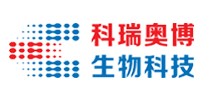产品中心
当前位置:首页>产品中心Anti-HSV 1 Neurovirulence factor ICP34.5/PE-Cy7
货号: bs-8605R-PE-Cy7 基本售价: 2980.0 元 规格: 100ul
产品信息
- 产品编号
- bs-8605R-PE-Cy7
- 英文名称
- Anti-HSV 1 Neurovirulence factor ICP34.5/PE-Cy7
- 中文名称
- PE-Cy7标记的神经毒性因子ICP34.5/人单纯疱疹病毒Ⅰ型抗体
- 别 名
- Herpes simplex virus 1; HSV1; Herpes Simplex Virus; Herpes Simplex Virus Type 1; HSV 1; Human herpesvirus 1; Human herpesvirus type 1;ICP34_HHV1F; Infected cell protein 34.5; Neurovirulence factor ICP34.5; protein gamma(1)34.5; Neurovirulence factor ICP34.5; ICP34_HHV1F.
- 规格价格
- 100ul/2980元购买 大包装/询价
- 说 明 书
- 100ul
- 研究领域
- 细胞生物 细菌及病毒
- 抗体来源
- Rabbit
- 克隆类型
- Polyclonal
- 交叉反应
- Herpes simplex virus 1
- 产品应用
- ICC=1:50-200 IF=1:50-200
not yet tested in other applications.
optimal dilutions/concentrations should be determined by the end user.
- 分 子 量
- 27kDa
- 性 状
- Lyophilized or Liquid
- 浓 度
- 1mg/ml
- 免 疫 原
- KLH conjugated synthetic peptide derived from HSV type 1, strain F Neurovirulence factor ICP34.5(101-200aa)
- 亚 型
- IgG
- 纯化方法
- affinity purified by Protein A
- 储 存 液
- 0.01M TBS(pH7.4) with 1% BSA, 0.03% Proclin300 and 50% Glycerol.
- 保存条件
- Store at -20 °C for one year. Avoid repeated freeze/thaw cycles. The lyophilized antibody is stable at room temperature for at least one month and for greater than a year when kept at -20°C. When reconstituted in sterile pH 7.4 0.01M PBS or diluent of antibody the antibody is stable for at least two weeks at 2-4 °C.
- 产品介绍
- background:
Herpes simplex type 1 (HSV-1) belongs to a family that includes HSV-2, Epstein-Barr virus (EBV) and Varicella zoster (chicken pox) virus amongst others. HSV-1 and HSV-2 are extremely difficult to distinguish from each other. Members of this family have a characteristic virion structure. The double stranded DNA genome is contained within an icosahedral capsid embedded in a proteinaceous layer (tegument) and surrounded by a lipid envelope, derived from the nuclear membrane of the last host, which is decorated with virus-specific glycoproteins spikes. These viruses are capable of entering a latent phase where the host shows no visible sign of infection and levels of infectious agent become very low. During the latent phase the viral DNA is integrated into the genome of the host cell.
Function:
Contributes to HSV resistance to the antiviral effects of alpha/beta interferon. Recruits the serine/threonine-protein phosphatase PPP1CA/PP1-alpha to dephosphorylate the translation initiation factor eIF-2A, thereby couteracting the host shutoff of protein synthesis involving double-stranded RNA-dependent protein kinase EIF2AK2/PKR. Also down-modulates the host MHC class II proteins cell surface expression. Acts as a neurovirulence factor that has a profound effect on the growth of the virus in central nervous system tissue, probably through its ability to maintain an environment favorable for viral replication.
Subunit:
Interacts with human PPP1CA to form a high-molecular-weight complex that dephosphorylates eIF2-alpha. Binds to host PCNA, which may release host cells from growth arrest and facilitate viral replication.
Subcellular Location:
Host cytoplasm. Host nucleus, host nucleolus. Virion. Note=At early times in infection, colocalizes with PCNA and replication proteins in cell nuclei, before accumulating in the cytoplasm by 8 to 12 hours post-infection. The effects on the host cell are mediated by de novo-synthesized ICP34.5, the virion-derived population being either non-functional or present in very low amounts.
Similarity:
Belongs to the PPP1R15 family.
Database links:
Important Note:
This product as supplied is intended for research use only, not for use in human, therapeutic or diagnostic applications.

